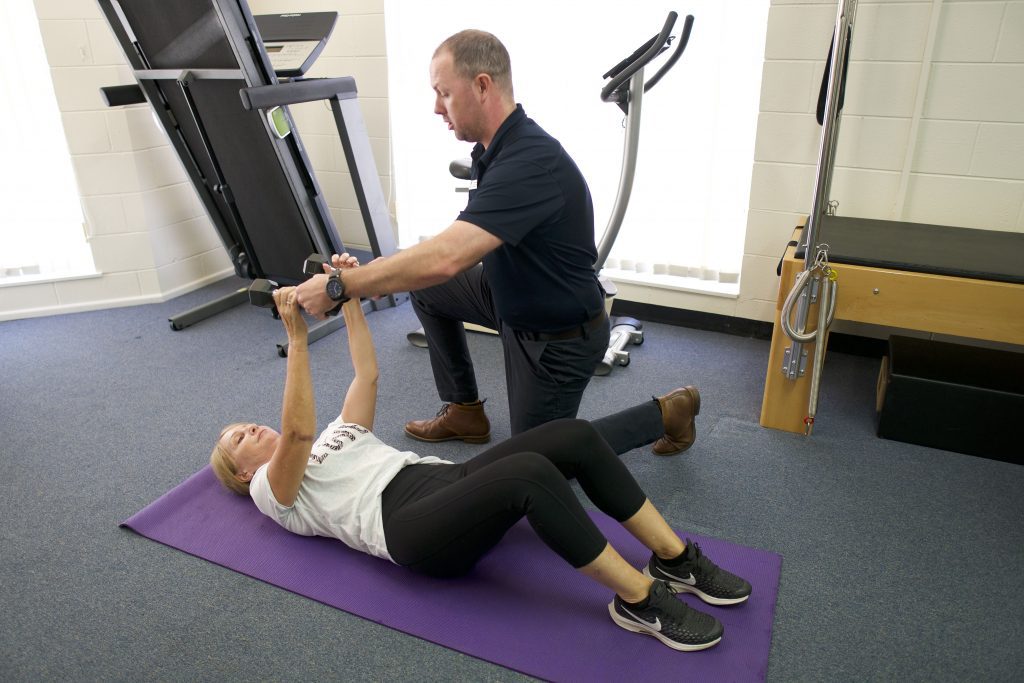
Strength Training to Reduce the Risk of Injury
Strength training is a form of exercise that uses resistance to induce muscle contraction, which works to build the strength, anaerobic endurance and size of skeletal muscles and bone density. Resistance can be anything that causes the muscles to contract – from free weights, resistance bands, your own body weight or even household items such as bricks and bottles.
Regular strength (or resistance) training will benefit anyone of any age, and it’s never too late to start. Research has shown that muscle strengthening can improve mobility and balance, core strength and more serious conditions such as heart health, high blood pressure, diabetes and osteoporosis.
Importantly, stronger muscles improve posture, provide better support for joints, and reduce the risk of injury from everyday activities. One of the leading preventable causes of death is physical inactivity, so being able to keep moving is essential for a healthy body and mind.
By working with your physiotherapist or exercise physiologist to build your strength and mobility, you will be able to move better and gain greater control over your body. It will also help in reducing the risk of serious injury and improve your capability for daily activities so that you can walk, run and play easier. Not to mention, prolong your life and enjoyment of life.
There are an abundance of reasons that people of all ages should be incorporating some kind of strength training into their exercise routine, and avoiding injury is a significant one not least because injury in turn leads to immobility.
3 ways strength training can prevent injury:
1. Increasing bone density
It’s common knowledge that your bones can become more brittle as you age, and are at a higher risk of osteoporosis. As bones become thinner and less dense, even a minor bump or fall can cause a serious fracture. When weight training, your bones become stronger due to the ‘stress’ placed on them that nudges bone-forming cells into action. The longer you stick with your resistance training, the stronger your bones become as they build up density.
2. Strengthening joints
Weight training is known to strengthen ligaments, tendons, tendon to bone, ligament to bone junction, joint cartilage and connective tissue sheaths within muscle. What does this all add up to? Much stronger joints! During dynamic movements, your ligaments become more flexible and better at absorbing the shock applied to them. Resistance training helps strengthen muscles and tendons while increasing the flexibility of the ligaments, decreasing the risk of one becoming strained or torn. Stronger muscles and tendons help hold your body in proper alignment and protect your bones and joints when moving or under impact.
3. Balancing muscles
When weight training, you should be building up strength and balancing out weaknesses in agonist and antagonist muscle groups. For example, the abdominal muscles and back muscles that function together and against one another will work to stabilise the spine. Balanced leg and hip muscles, as well as abdominal strength, will help to align your spine and reduce swaying while walking, which increases stability and reduces your risk of a fall.
Getting Started
If you are thinking about incorporating strength training into your exercise routine, it’s important to speak to a healthcare professional for advice before starting. Make sure you have an assessment and program written for your specific needs. Have a physiotherapist, exercise physiologist, exercise rehabilitation professional or registered fitness professional take you through exercises to ensure your technique is safe. You can book an appointment with one of our physiotherapists for assessment and guidance via our website.
If you want a helping hand to get started with resistance training, our exercise classes are a great way to introduce rehabilitative movements to your body. For advice on what kind of training is right for you, our Physiotherapy and Exercise Physiology team are always happy to help you get started!
Good luck, and have fun on your strength training journey!
Have a look at a break down of our PhysioExercise Class Streams here. If you need help with pain or immobility to get you moving again, or need a tailored exercise program, book in for your treatment now with one of our exercise, physio, or pain specialists via 1300 012 273 or head to our website and book a session at your nearest clinic. https://corehealthcare.com.au/
